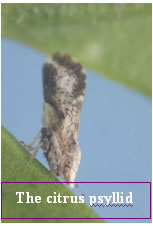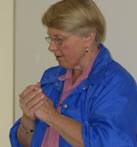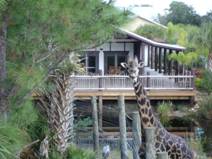
Vol. 4, No. 3, March 2008 |
 Printer-Friendly PDF Version Printer-Friendly PDF Version |
|
|
|||||||||||||||||||||||||||||||||||||||||||
|
I'd say the March training event was very valuable and accomplished all of our key objectives. The event was to 1) test our equipment and the needs of being self contained, 2) test the Incident Management Team in managing and supporting almost 100 people - our past real deployments have typically been 25 or fewer people - this scale would prepare the IMT to handle a disease outbreak response or catastrophic hurricane response and 3) engage the EARS and HSUS teams with the UF College of Veterinary Medicine VETS team, and the Vet Corps reserve veterinarians, in a real patient care event and to discover flaws in the workflows and documentation. All three objectives were accomplished - and all participants walked away with ideas on how to improve their performance next time, knowing that next time could be for real. It also provided an opportunity for people across different agencies to work and play |
|
| together (there was some late night karaoke) and to develop relationships that will be valuable in future deployments. |
|
Joan Dusky, Associate Dean, IFAS, UF John Haven, Director, College of Veterinary Medicine, UF |
Photos from March: SART In Action
 |
Internet Article Link: "Do We Decon Dogs?"
| Florida SART and its partner organizations may be well ahead
of the information in this article, which is a year old, but
the legal background presented by Spencer Hall, MD, JD, will
certainly be of interest: http://www.jems.com/news_and_articles/articles/Do_We_Decon_Dogs.html;jsessionid=971
|
Gulf Sturgeon Begin Entering Suwannee
 |
Under the “Just thought you ought to know” heading, Gulf sturgeon have once again begun their migration into the Suwannee River, prompting warnings to boaters about the deadly, though not especially ferocious jumping fish. Scientists are not quite sure why sturgeons leap but they insist the fish are docile and do not jump, as some boaters claim, to “protect their turf.” Increasing river traffic and lower water levels, which concentrate boats and fish into a smaller area, compounds the problem. In almost all collisions, the victim has been knocked unconscious. In March 2007, Sharon Touchton was riding a jet ski when a sturgeon hit her. A surgeon later reattached three of her fingers severed in that collision, but she lost a fourth and a tooth, suffered skull fractures under her eyes and almost bit off her tongue. |
||
|
The hard-plated sturgeon can grow to seven feet in length and weigh as much as 170 pounds. They are notorious for leaping unexpectedly into the air. According to the Florida Fish and Wildlife Conservation Commission, this acrobatic maneuver sometimes causes them to colliding with boats and passengers. In 2007, nine people were injured in collisions with the large fish, and one man drowned when the boat he was riding in swerved to avoid a flying fish and the man fell into the water, the commission reported. Sturgeon typically spend eight to nine months in the Suwannee spawning. This Florida river appears to support the largest viable population of these fish. |
|
||||||||||||||||||||||||
|
Eligible dairy producers who suffered production losses between January 1, 2005 and December 31, 2007 may now apply to receive benefits under the Dairy Disaster Assistance Program III. Producers can sign up at local USDA Farm Service Agency (FSA) service centers through May 5. Authorized by the U.S. Troop Readiness, Veterans' Care, Katrina Recovery, and Iraq Accountability Appropriations Act, 2007, the program provides $16 million in benefits to dairy producers for production losses due to natural disasters. To be eligible, a producer's operation must be in a county designated a major disaster or emergency area by the president or declared a natural disaster area by the secretary of agriculture. Producers in contiguous counties are also eligible. Producers in counties declared disaster areas by the president may be eligible, even though the loss was not covered by the declaration, if an FSA Administrator's Physical Loss Notice covered such losses. FSA began enrolling producers in DDAP-III in late 2007 and early 2008, then temporarily halted sign-up pending the completion of rulemaking, which began with a proposed rule for public comments. Based on those comments, FSA made minor changes to the proposed DDAP-III rules. These changes are explained in the final DDAP-III regulations, which were published in the March 4 Federal Register. For more information contact Stevin Westcott (202) 720-4178, Keith Williams (202) 720-4623 or Cynthia Portalatin (352) 379-4562 cynthia.portalatin@fl.usda.gov |
Zoo Schedules TLAER Course with Haz Mat Training
| According to Deb Anderson, the Melbourne/Brevard Zoo is offering a four-day hands-on certificate training class in Technical Large Animal Emergency Rescue (TLAER) with a day of hazardous materials decontamination training at the end. (“On the last rescue day,” Anderson says, “there is a night drill so that day can run from 7:30 a.m. until past 11:00 p.m. It's intense!”) Dates are May 5th-8th. The course runs all day each day at the zoo, 8225 N. Wickham Rd., Melbourne, FL 32940. Target audience ?rescue personnel, veterinarians, vet techs, zoo keepers ?those who may need to work with farm, zoo or even wild animals. The registration fee is $300; the proceedings on paper is an additional $30; and the T-shirt is $15. |
|
||
For additional information including costs, contact Deb Anderson (Sunday-Thursday) at (321) 254-9453 x 250 or danderson@brevardzoo.org. The site www.TLAER.org has additional materials of interest about instructors Tomas and Rebecca Gimenez. |
|||
Christy Returns to Florida DOACS
|
Greg Christy, DVM, spent the past year working for the Department of Homeland Security in Washington, D.C., returning to Florida DOACS on February 11th. His assignment as a liaison between federal, state and industry food and agriculture stakeholders was in the Office of Infrastructure Protection. “I have had the wonderful opportunity to promote state interests while working on federal projects that affect our food and agriculture sector,” Christy said. Christy worked on joint projects with DHS, USDA and HHS including the Presidential Working Group on Import Safety and updating the National Response Plan. He also participated in activations of the National Operations Center (NOC) and the National Infrastructure Coordinating Center (NICC), as well as administration of the Homeland Security Information Network (HSIN) web portal. |
Florida’s Exotic Plant Diseases - In Review
 |
|
|
| |
Current NASAAEP Notes
|
[top]
Alleged Dog Fighting Ring Surfaces in Ocala
| Busted by his aunt, an Ocala man has allegedly been running a dog fighting ring off and on for several years. When Joe VanHoose of the Ocala Star-Banner inquired at the Marion County Courthouse, it appeared that the man, Willie Lee Lewis, Jr. has been arrested 21 times and charged with 26 felonies since 1990. Many charges were later dropped, but Lewis has served a combined six years in prison over the years for grand theft and for possessing and selling cocaine. For additional information about this incident of dog fighting, visit the Ocala Star-Banner web site at www.ocala.com/article/20080314/NEWS/803140335/1001/NEWS01. |
|
[top]
About the SART Sentinel
|
Editor: Rick Sapp, PhD, Technical Writer, Florida Department of Agriculture & Consumer Services, Division of Animal Industry [rsa5@cox.net] Associate Editor: Joe Kight, State ESF-17 Coordinator, Florida Department of Agriculture & Consumer Services, Division of Animal Industry [kightj@doacs.state.fl.us] The SART SENTINEL is an E-mail newsletter prepared monthly by Rick Sapp and the members of the Florida State Agricultural Response Team. Past issues of the Sentinel are archived on the Florida SART Web Site, www.flsart.org. If you have a story or photo that you would like to have considered for publication in The SART SENTINEL, please contact the Editors. |

 Joan Dusky led the
assessment discussion
following the SART
training exercise.
Joan Dusky led the
assessment discussion
following the SART
training exercise. 


